Beyond their charming appearance and function as natural shade, no, no, no. Floating plants wield extraordinary capabilities. By tapping into both the water column and atmospheric CO2, they emerge as formidable allies in the perpetual battle against algae growth in your aquarium.
Floating plants are so easy to maintain, and their fast growth eats up nitrates from the water column, making them ideal for all beginners and experts.
Today, I’ll go over my favorite floating plants, all of which I’ve had great success with in the past. I’ve ranked them on 10 different data points to help you understand the pros and cons of each plant.
Table of Contents
Top Ranked Floating Plants Preview
The following are the top 6 out of the 9 plants I tested. And my absolute personal favorite, even though it’s ranked 6th, is Brazilian Pennywort (Hydrocotyle leucocephala). But, all of the plants discussed in this article are great, and I encourage you to read about each one.
Amazon Frogbit (Limnobium laevigatum)
Key Info:
- Temperature: 64° – 86° F (18° – 30° C)
- pH: 6.0 – 7.5
- Lighting: Medium to High
- Origin: Central and South America
- Placement: Floating
- Care: Easy
Why I recommend Amazon Frogbit
This plant has it all: it’s beautiful, easy to plant, thrives on neglect and is simple to maintain.
Pros & Cons
Pros
Beautiful, looks like tiny lily pads
Easy to plant
Removes lots of nitrate
Cons
Doesn’t thrive in low light
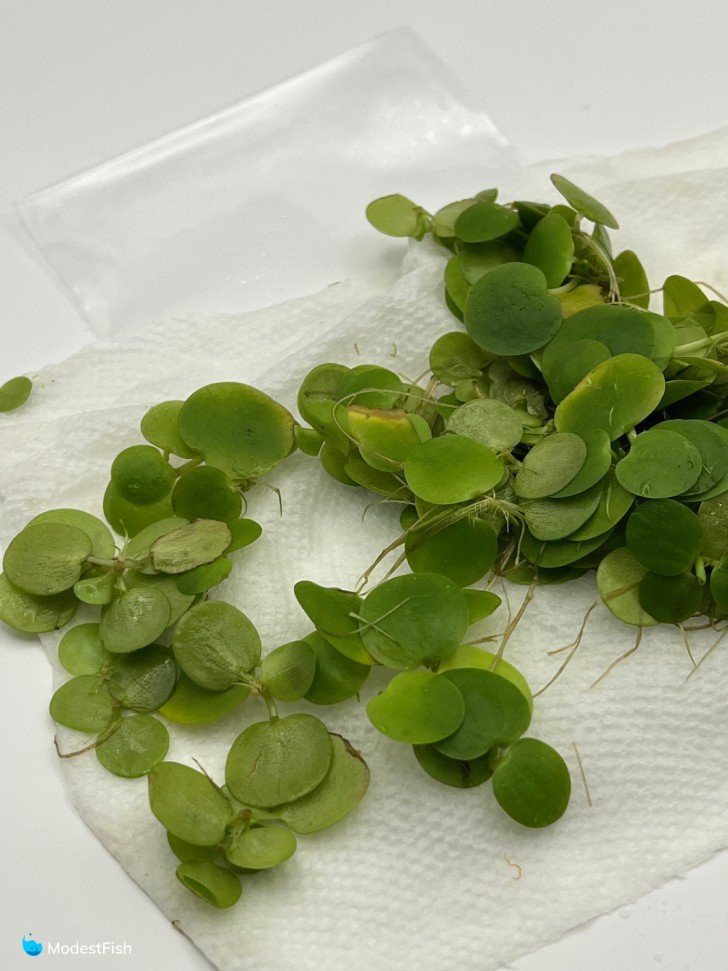
Overall Score: 8.8/10
In-depth Scoring
Planting: 10/10
Trimming: 10/10
Algae Control: 10/10
Sensitivity: 9/10
Hardiness: 10/10
Aesthetics: 8/10
Availability: 8/10
Cost: 6/10
Compatibility: 7/10
Contributions: 10/10
Water Wisteria (Hygrophila difformis)
Key Info:
- Temperature: 72° – 82° F (22° – 28° C)
- pH: 6.5 – 7.5
- Lighting: Moderate
- Origin: Indian subcontinent
- Placement: Floating (can also plant)
- Care: Easy
Why I recommend Water Wisteria
An attractive floating plant that grows quickly and eats up a lot of nitrate.
Pros & Cons
Pros
Grows quickly
Simple to maintain
Eats lots of nitrate
Cons
Period of transition from the emersed form to the immersed one
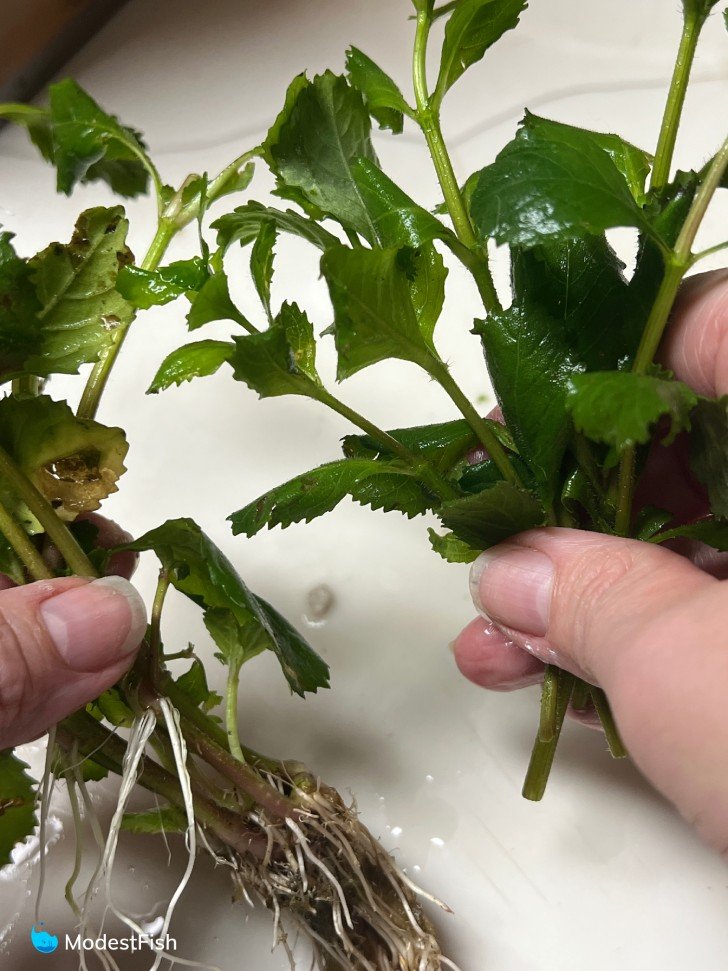
Overall Score: 8.7/10
In-depth Scoring
Planting: 10/10
Trimming: 9/10
Algae Control: 3/10
Sensitivity: 10/10
Hardiness: 10/10
Aesthetics: 8/10
Availability: 10/10
Cost: 10/10
Compatibility: 7/10
Contributions: 10/10
Water Sprite (Ceratopteris thalictroides)
Key Info:
- Water Temperature: 68°F – 82°F (20°C – 28°C)
- pH: 6-7.5
- Lighting: Medium to High
- Origin: Asia
- Placement: Floating (can also plant)
- Care: Easy
Why I recommend Water Sprite
water sprite is very similar to water wisteria, just with thinner fronds. It’s easy to care for and has a positive impact on water parameters.
Pros & Cons
Pros
Trimming is simple
Grows quickly
More delicate looking than wisteria
Cons
Looks messy from below
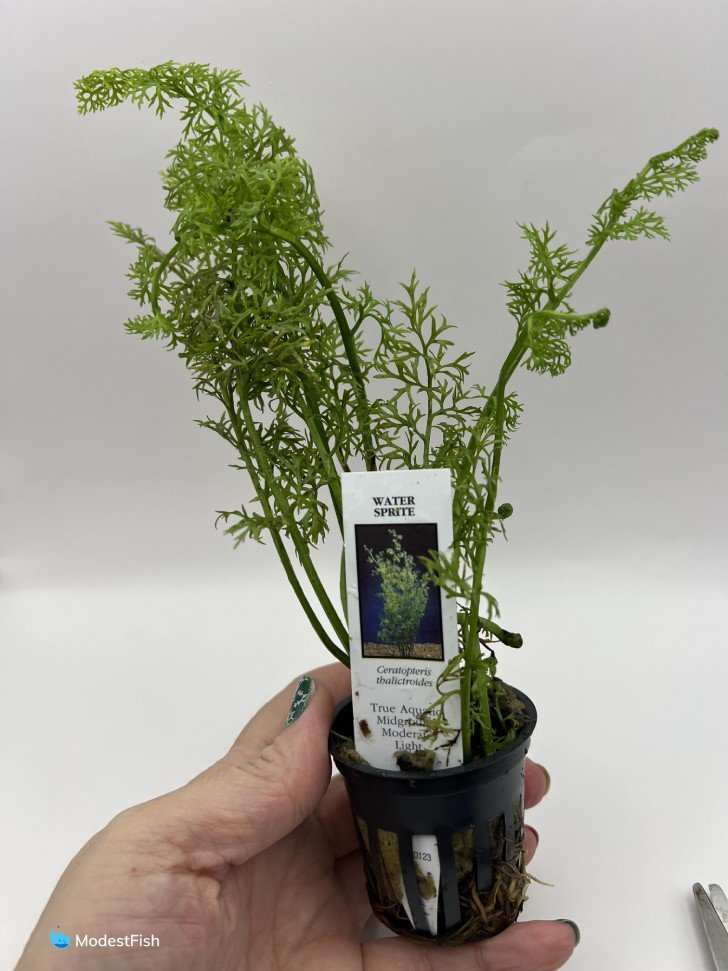
Overall Score: 8.4/10
In-depth Scoring
Planting: 10/10
Trimming: 9/10
Algae Control: 3/10
Sensitivity: 10/10
Hardiness: 10/10
Aesthetics: 7/10
Availability: 9/10
Cost: 10/10
Compatibility: 7/10
Contributions: 9/10
Water Spangles (Salvinia minima)
Key Info:
- Temperature: 65° – 89° F (16° – 32° C)
- pH: 6.5 – 8.0
- Lighting: Medium to High
- Origin: Central and South America
- Placement: Floating
- Care: Easy
Why I recommend Water Spangles
This nifty little plant is similar to frogbit, but much smaller. Its leaves are textured like a cat’s tongue.
Pros & Cons
Pros
Interesting and unique texture
Grows quickly
Cons
Needs very still water to grow
Requires at least medium lighting

Overall Score: 8.3/10
In-depth Scoring
Planting: 10/10
Trimming: 7/10
Algae Control: 10/10
Sensitivity: 10/10
Hardiness: 10/10
Aesthetics: 8/10
Availability: 5/10
Cost: 5/10
Compatibility: 8/10
Contributions: 10/10
Anacharis (Elodea sp.)
Key Info:
- Temperature: 60°-82°F (16°-28°C)
- pH: 6.0-8.0
- Lighting: Low
- Origin: North America
- Placement: floating (can also plant)
- Care: Easy
Why I recommend Anacharis
This isn’t the most attractive floating plant, but it’s very simple to maintain and shrimp love it.
Pros & Cons
Pros
Fast growing
Eats up nitrate from the water
Easy to trim
Great for ornamental shrimp
Cons
Not the most attractive floating plant
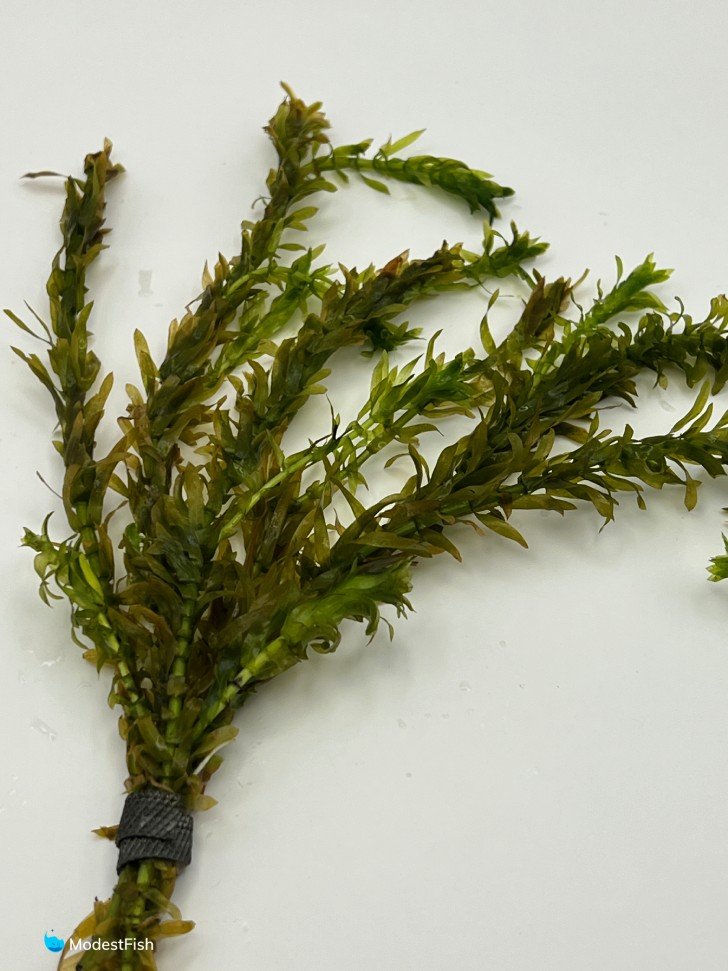
Overall Score: 8.3/10
In-depth Scoring
Planting: 10/10
Trimming: 10/10
Algae Control: 3/10
Sensitivity: 10/10
Hardiness: 10/10
Aesthetics: 5/10
Availability: 10/10
Cost: 10/10
Compatibility: 7/10
Contributions: 8/10
Brazilian Pennywort (Hydrocotyle leucocephala)
Key Info:
- Temperature: 68° – 82° F (20° – 28° C)
- pH: 6.5 – 8.0
- Lighting: Medium
- Origin: South America, Mexico, and Argentina.
- Placement: Floating
- Care: Easy
Why I recommend Brazilian Pennywort
Easy and beautiful floating plant that looks like a cross between ivy and lily pads.
Pros & Cons
Pros
Beautiful leaves
Eats up nitrate
Can handle much more water flow than other floating plants
Cons
Goes dormant for a few months each year
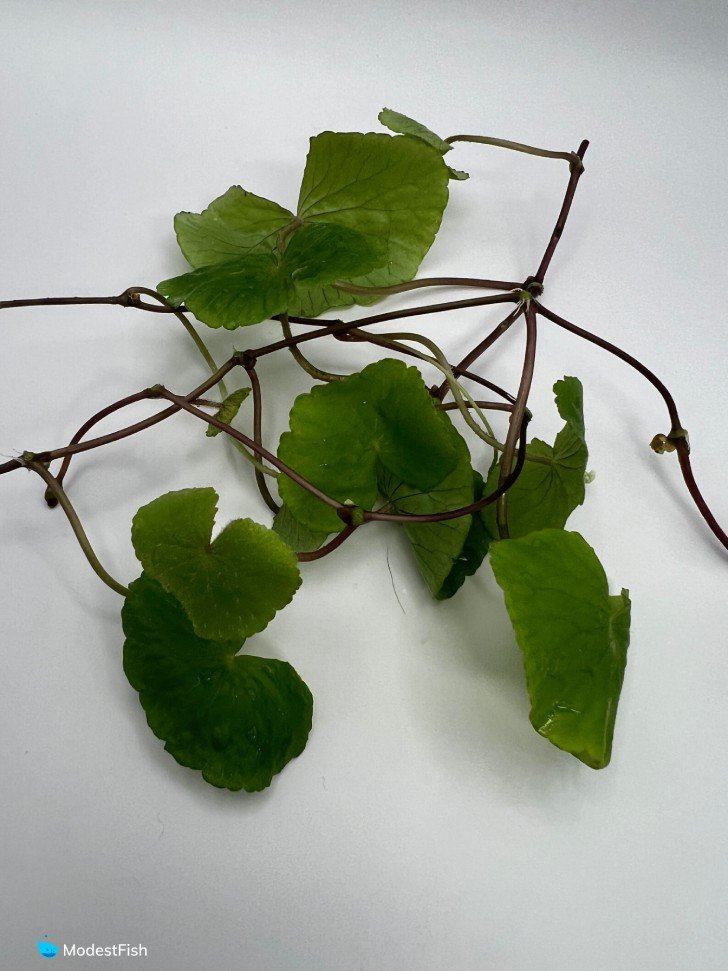
Overall Score: 8.2/10
In-depth Scoring
Planting: 10/10
Trimming: 10/10
Algae Control: 10/10
Sensitivity: 8/10
Hardiness: 8/10
Aesthetics: 9/10
Availability: 10/10
Cost: 7/10
Compatibility: 8/10
Contributions: 9/10
How Were the Floating Plants Rated?
I already owned many of the floating plants I discuss in this article I’ve kept them for years, and therefore, have a lot of experience with them.
So, I felt comfortable comparing and contrasting them based on my own knowledge.
But, just to help provide a little more insight, I ordered new floating plants for my tanks. I wanted to be able to show you what to expect when you order these plants and then get them started in your own tanks.
I looked at the pros and cons of each species and assigned ratings for the following criteria:
- Planting – how difficult is it to get the plant placed in the tank initially?
Considering these are all floating plants, they all got great scores. However guppy grass can go a bit insane, which is why it didn’t score so well.
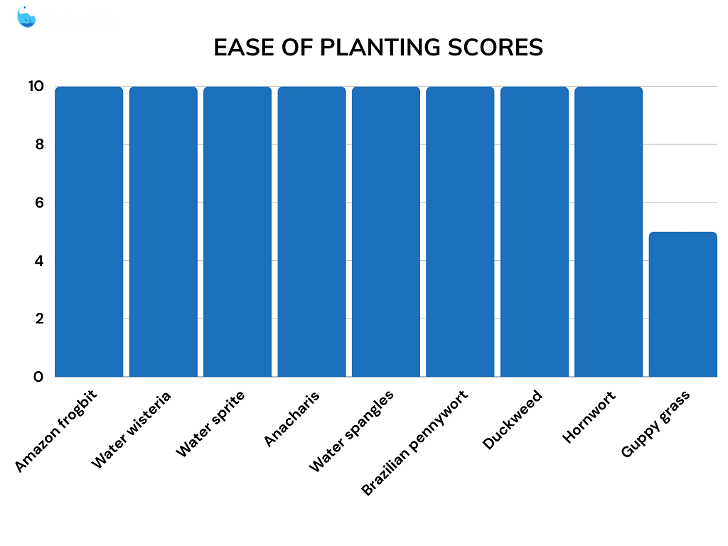
- Trimming – how often does the plant need to be trimmed and how difficult is it to do?
Amazon frogbit and Anacharis require the least amount of trimming.
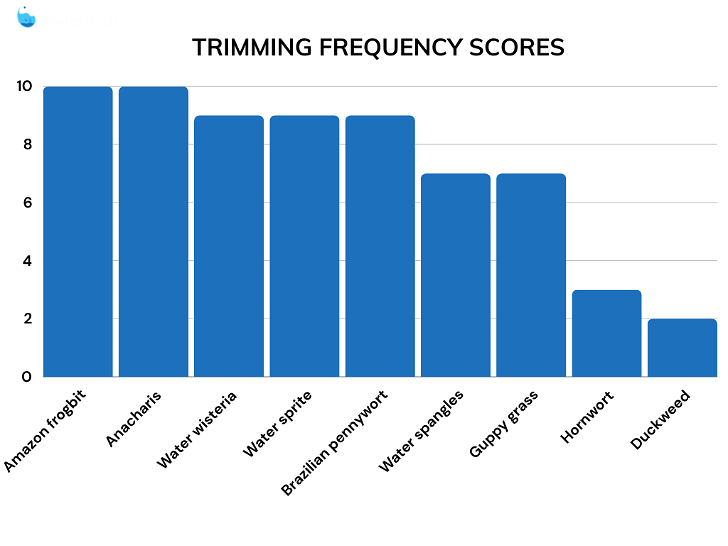
- Algae control – is the plant prone to algae and how difficult is it to clean algae off?
Amazon frogbit, brazillian pennywort, water spangles, and duckweed are the best floating plants for controlling algae in your tank.
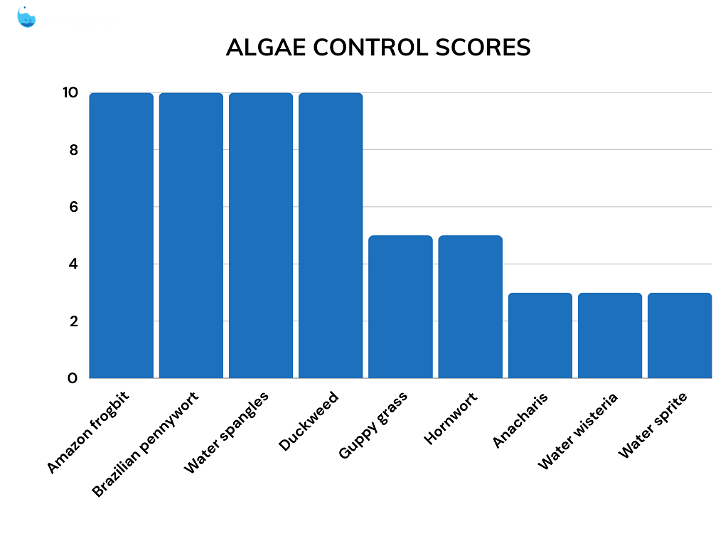
- Sensitivity – does the plant melt back after swings in water parameters? Melting back doesn’t kill the plant, it just makes the plant drop all of its leaves.
Most floating plants performed well in this category. Hornwort performed the worst and in my experience, it’ll either take really well or melt before it flourishes.
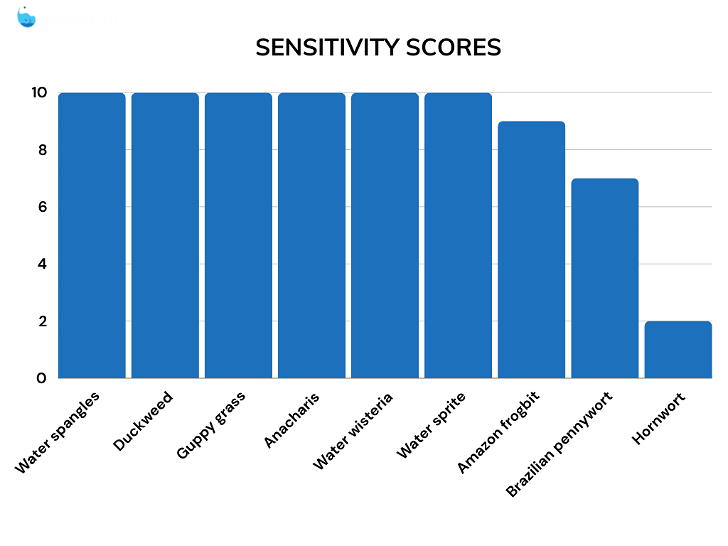
- Hardiness – how hard is it to keep the plant alive long term?
All floating plants here excel at hardiness
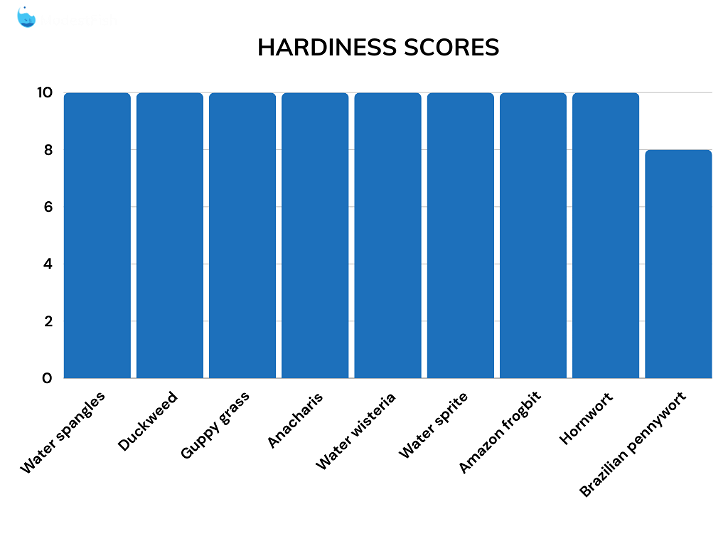
- Aesthetics – how attractive is the plant to look at?
Very subjective. Personally I think brazilian pennywort is the most attractive floating plant.
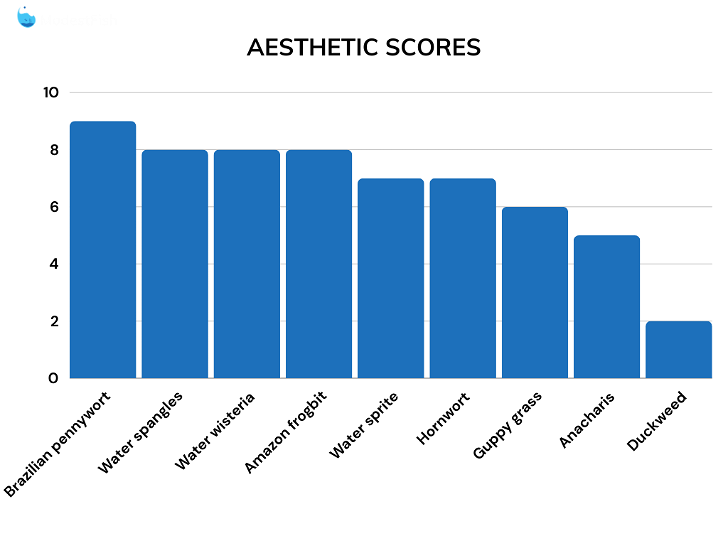
- Availability – how hard is it to find this species in the aquarium trade?
The most commonly available floating plants are water wisteria, anacharis, and duckweed.
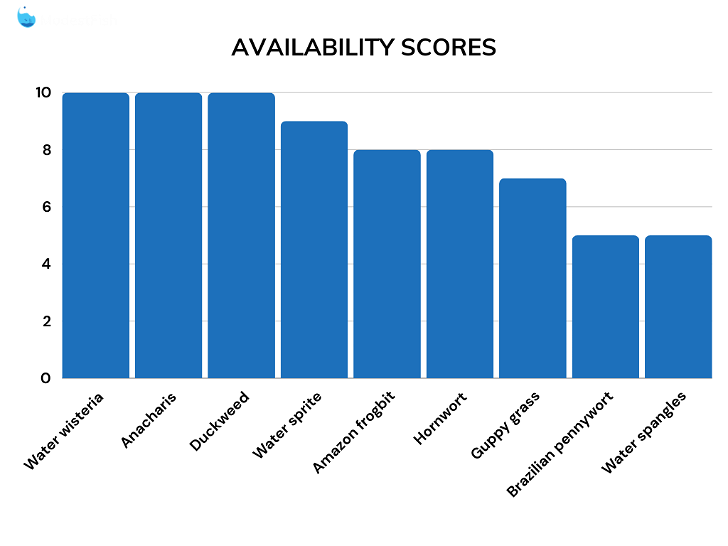
- Cost – how expensive is the plant compared to how much of it you get?
Generally floating plants aren’t too expensive. The most cost-friendly are water wisteria, anacharis, duckweed, water sprite, and guppy grass. Remember they propagate very fast so you don’t need to buy many at first.
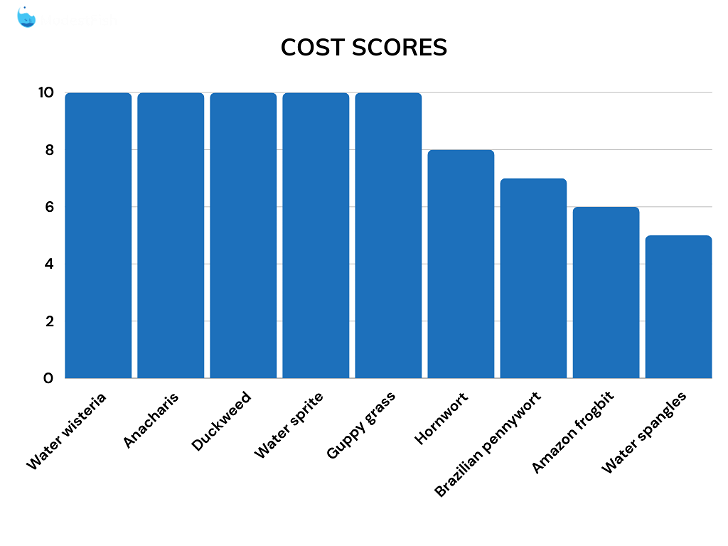
- Compatibility – is the plant delicate and easily eaten, or is it tough and can withstand fish that typically eat plants?
Hornwort is compatible with most fish and plant eaters.
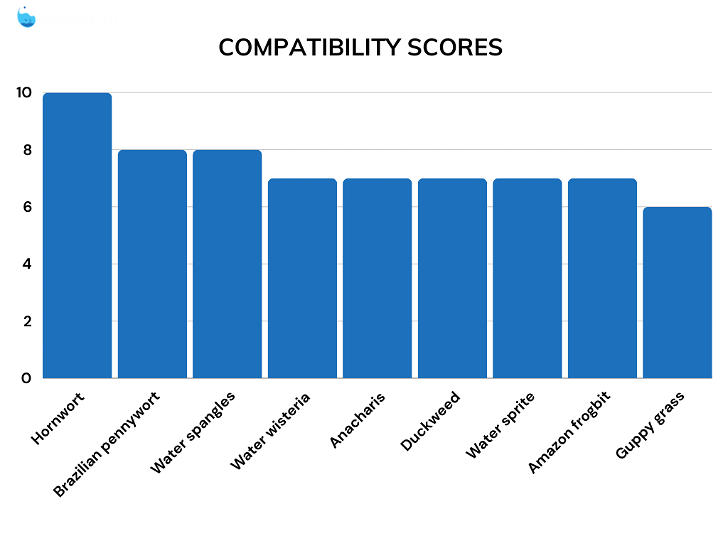
- Contributions – does the plant eat up a significant amount of nitrate?
Generally floating plants do an excellent job of eating up nirates. Best performers in this list are water spangles, water wisteria, duckweed, and amazon frogbit.
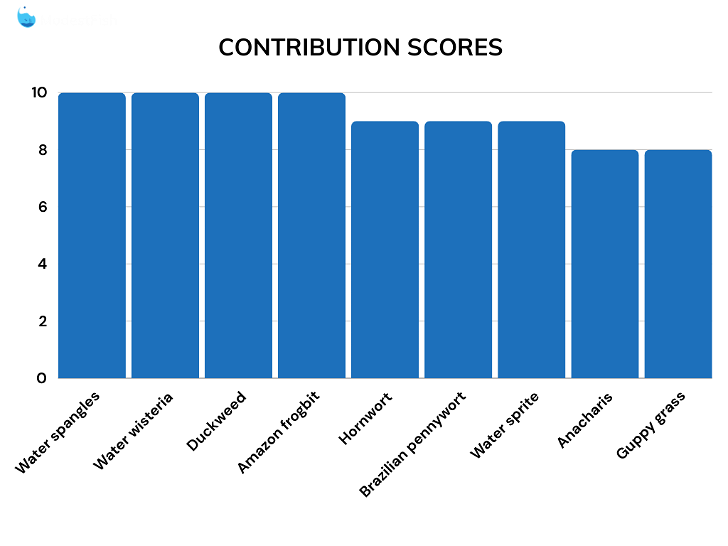
Total Scores After Testing
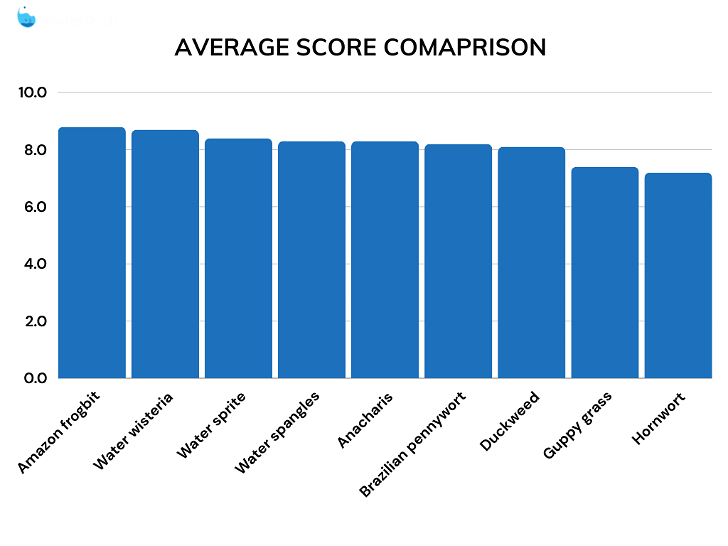
- 1. Amazon frogbit 8.8/10: This plant has it all: it’s beautiful, easy to plant, thrives on neglect and is simple to maintain.
- 2. Water wisteria 8.7/10: An attractive floating plant that grows quickly and eats up a lot of nitrate.
- 3. Water sprite 8.4/10: Very similar to water wisteria, just with thinner fronds. It’s easy to care for and has a positive impact on water parameters.
- 4. Water spangles 8.3/10: A nifty little plant is similar to frogbit, but much smaller. Its leaves are textured like a cat’s tongue.
- 5. Anacharis 8.3/10: This isn’t the most attractive floating plant, but it’s very simple to maintain and shrimp love it.
- 6. Brazilian pennywort 8.2/10: Easy and beautiful floating plant that looks like a cross between ivy and lily pads.
- 7. Duckweed 8.1/10: Hands down, it removes nitrate from the water column the best. But, it can easily become an overgrown mess.
- 8. Guppy grass 7.4/10: My number one choice is you want to provide hiding places for shrimp and fry.
- 9. Hornwort 7.2/10: A large floating plant that eats up lots of nitrate, but can be sensitive and difficult to get established, at first.
Reviews For Each Floating Plant
1. Amazon Frogbit (Limnobium laevigatum)
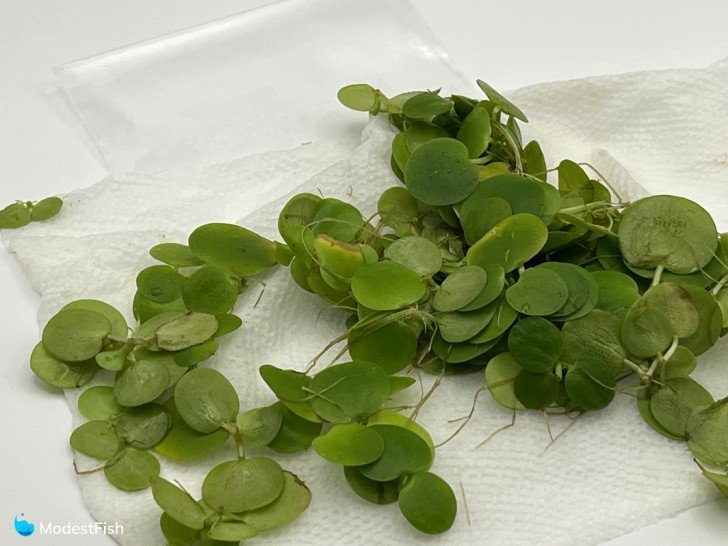
- Temperature: 64° – 86° F (18° – 30° C)
- pH: 6.0 – 7.5
- Lighting: Medium to High
- Origin: Central and South America
- Placement: Floating
- Care: Easy
I love frogbit. I keep it in several of my tanks.
I have found that, although it can survive under low lighting, to really thrive, this plant needs medium to high lighting.
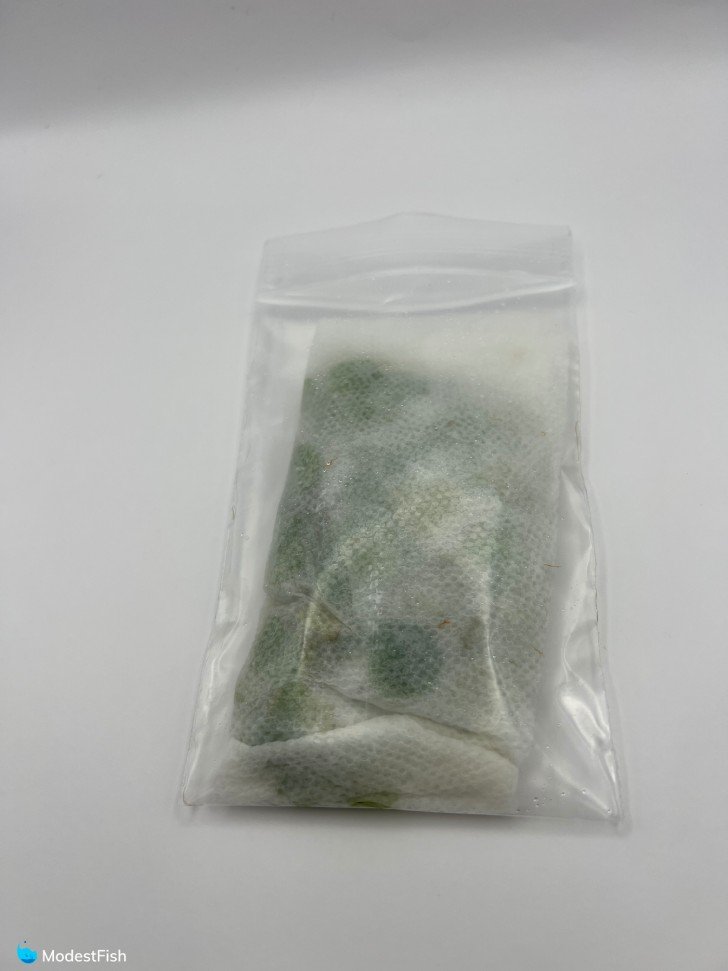

Most floating plants are attractive, and easy to keep, but I think frogbit is a cut above the rest.
It grows as clusters of smooth, rounded, bright green leaves that look like tiny lily pads floating on the water’s surface. They are so cool.
Underneath the water, the plant trails a grouping of roots that feed directly from the water column. Frogbit does a really good job of removing nitrate from the water column.
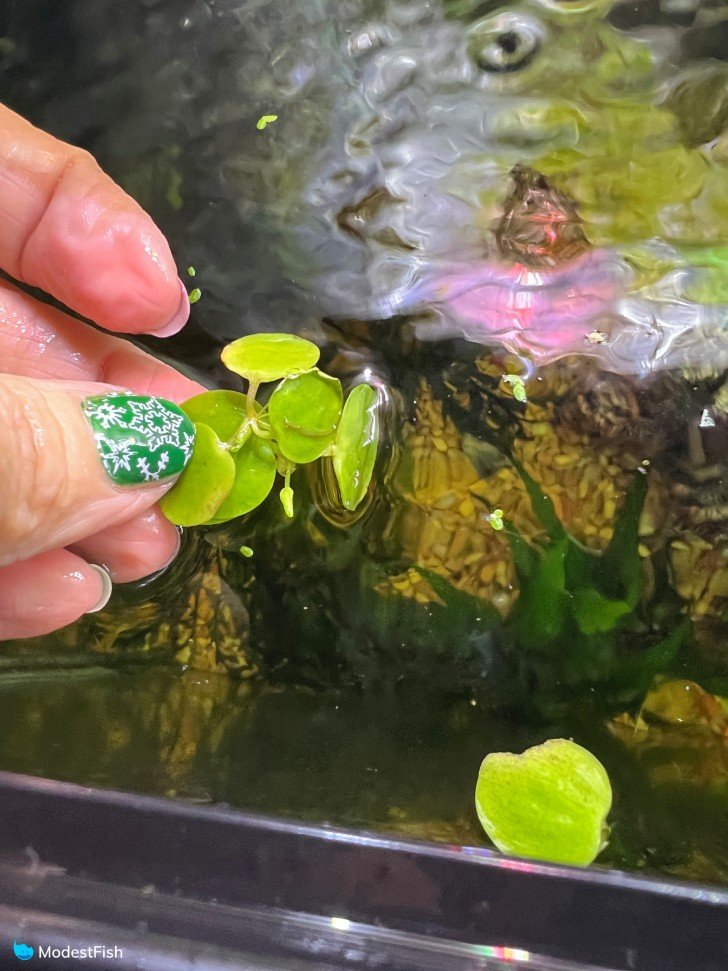
I’ve always found that frogbit grows quickly, the higher the lighting, the more quickly it will spread along the water’s surface. The plant will send out a long, thin runner that sprouts a cute little baby frogbit plant, just a single leaf and tiny clump of roots, at first.
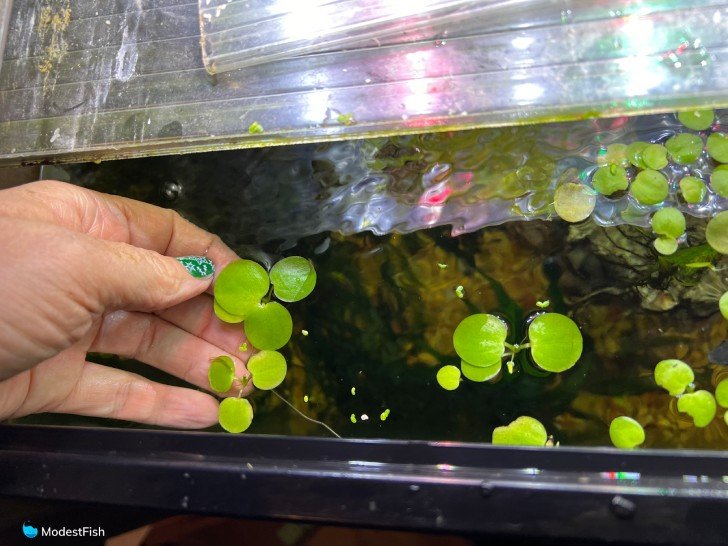
This plant does grow quite quickly, but luckily, trimming it is extremely easy. I just scoop out plants with my hand and throw them into the compost bin. They break down really easily and are rich in nitrogen.
One thing I have definitely found, though, is that frogbit does not tolerate strong surface agitation well. It does best in calm water. So, it will need to be in an area of the tank with little to no current. If you have a hang-on-the-back, you may need to baffle your filter to reduce water flow in the tank.
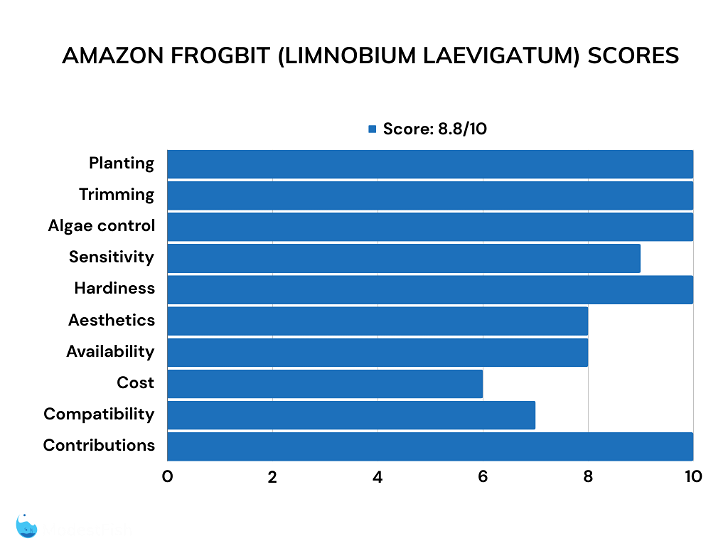
Pros:
- Beautiful, looks like tiny lily pads
- Easy to plant
- Removes lots of nitrate
Cons:
- Doesn’t thrive in low light
- Can’t withstand water current well
Verdict – this plant has it all: it’s beautiful, easy to plant, thrives on neglect and is simple to maintain.
Last update on 2024-04-26 / Commissions Earned / Images from Amazon Product Advertising API
2. Water Wisteria (Hygrophila difformis)
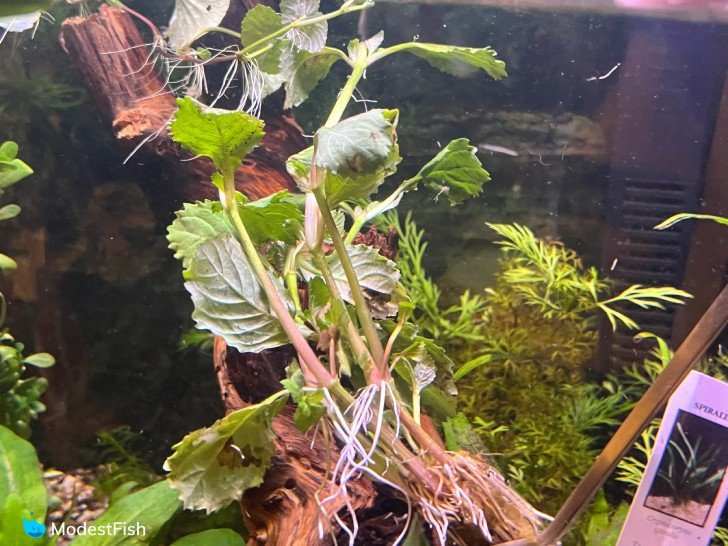
- Temperature: 72° – 82° F (22° – 28° C)
- pH: 6.5 – 7.5
- Lighting: Moderate
- Origin: Indian subcontinent
- Placement: Floating (can also plant)
- Care: Easy
I’ve found that it’s so much easier to grow water wisteria as a floating plant than trying to root it down in the substrate. Floating it really cuts down on the maintenance.
If you try to grow your water wisteria rooted in the substrate, the bottoms of the plant get raggedy, lose their leaves and generally just look kind of crappy.
I always pulled up the plants, cut off the tops, discarded the bottoms and then replanted the cuttings. It was always a particular pain because the tops can be stubborn about floating away, so you keep having to mess with them to keep them in place.
As a floating plant, wisteria grows out along the surface of the water, instead of trying to grow up. It will trail clumps of roots down into the water, but the plant will mostly absorb nutrients through its leaves and stems.

Trimming is then very simple, just cut off branches and discard them, allowing the rest of the plant to just keep floating in the tank. Super easy.
Water wisteria creates great cover for small fish that can hide in its tangle of stems and leaves.
Just so you know, when you first get your water wisteria, it will likely look different than what it will as it grows. Most nurseries grow this plant emmersed, meaning the roots are underwater, but the top of the plant grows completely outside the water. The plant will put out solid, spade shaped leaves; water wisteria plants grown this way look kind of like mint plants.
But, when grown underwater, the leaves become palmate, looking more like a fern. This underwater form is much more attractive, in my opinion.
It will take some time for new plants to switch their leaf growth from the emersed form to the immersed one.
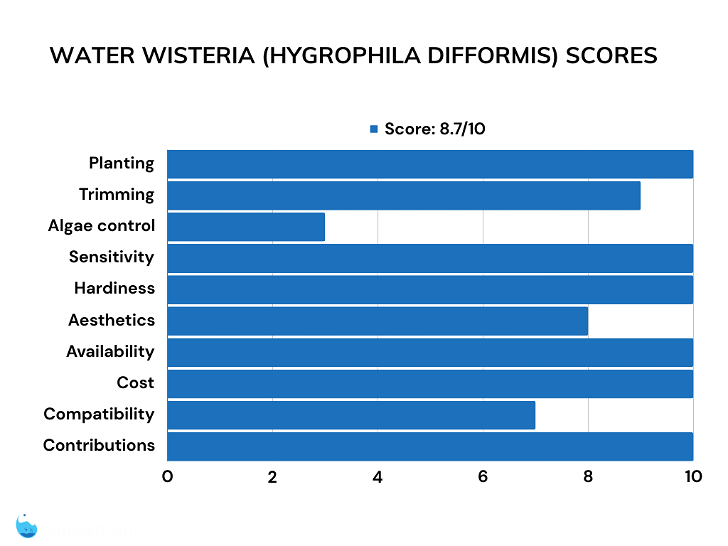
Pros:
- Grows quickly
- Simple to maintain
- Eats lots of nitrate
Cons:
- Period of transition from the emersed form to the immersed one
Verdict – water wisteria is an attractive floating plant that grows quickly and eats up a lot of nitrate.
Last update on 2024-04-26 / Commissions Earned / Images from Amazon Product Advertising API
3. Water Sprite (Ceratopteris thalictroides)
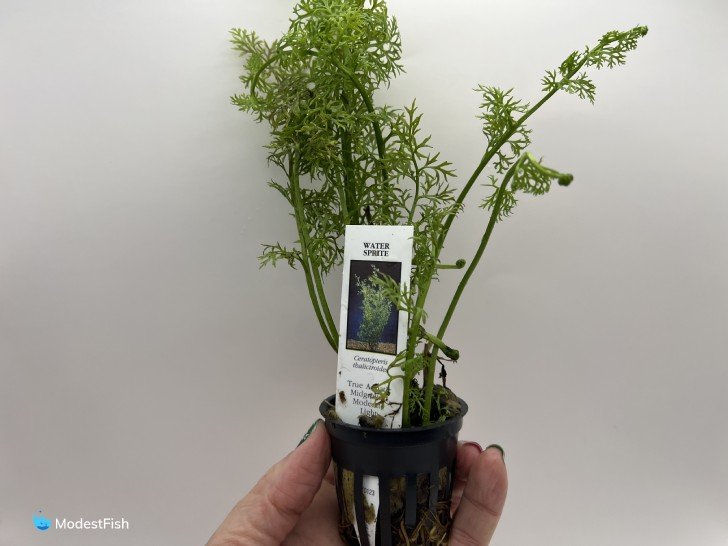
- Water Temperature: 68°F – 82°F (20°C – 28°C)
- pH: 6-7.5
- Lighting: Medium to High
- Origin: Asia
- Placement: Floating (can also plant)
- Care: Easy
Just like water wisteria, water sprite takes a lot of maintenance if you try to grow it rooted in the substrate; it also requires trimming and replanting.
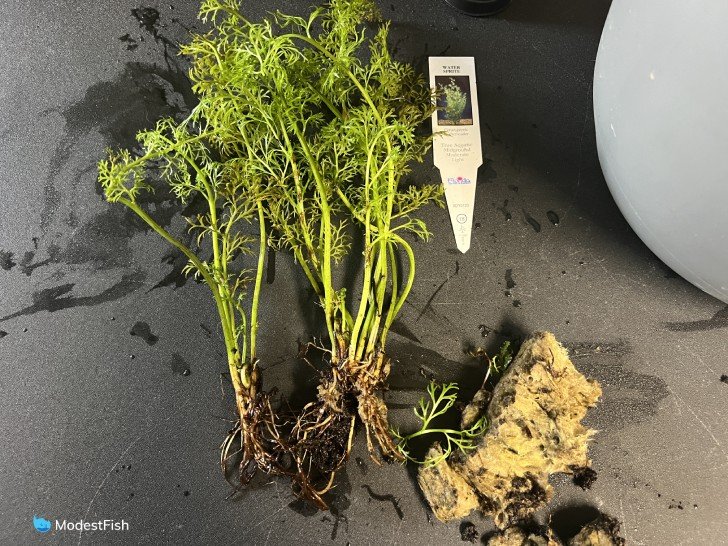
But, grown as a floating plant, water sprite is much simpler to take care of. Like water wisteria, water sprite also has palmate leaves, but the fingers of the fronds are much thinner.
Of the two, I like the look of the more delicate water sprite fronds, but each to their own.
I guess I would gripe about one thing, I think it looks really cool from up top, but it’s not the most attractive thing to look at from the bottom. It looks a bit like a messy tangle of stems and roots.
Trimming is very simple: just snip off branches with a pair of scissors and discard them. I’ve found they make great compost.
I have noticed that you don’t want the water sprite to cover too much of the surface of your water. It can block water flow and lead to dead spots in the tank.
In my experience, water sprite has a big impact on water parameters. It fuels that constant growth with nutrients that it pulls straight from the water column.
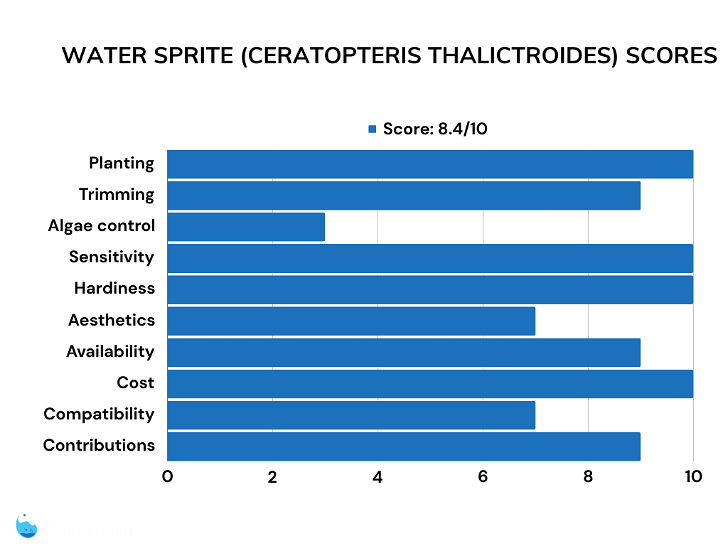
Pros:
- Trimming is simple
- Grows quickly
- More delicate looking than wisteria
Cons:
- Looks messy from below
Verdict – water sprite is very similar to water wisteria, just with thinner fronds. It’s easy to care for and has a positive impact on water parameters.
Last update on 2024-04-26 / Commissions Earned / Images from Amazon Product Advertising API
4. Water Spangles (Salvinia minima)
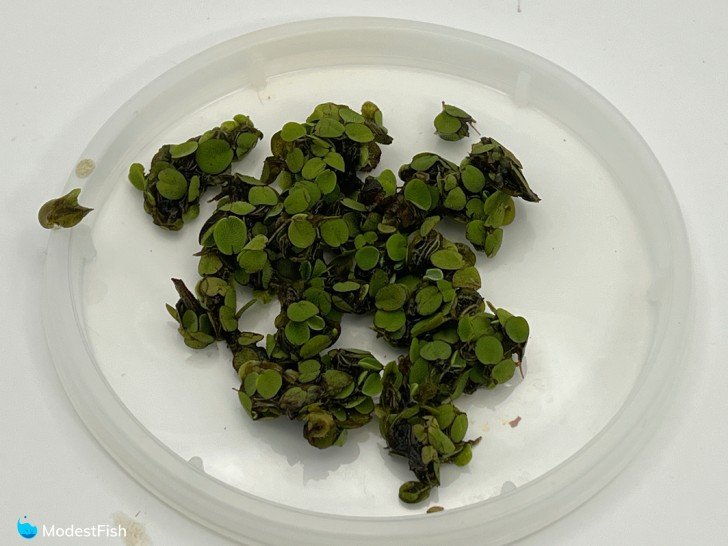
- Temperature: 65° – 89° F (16° – 32° C)
- pH: 6.5 – 8.0
- Lighting: Medium to High
- Origin: Central and South America
- Placement: Floating
- Care: Easy
Water spangles are really cool little floating plants that are kinda similar to frogbit, but much smaller.
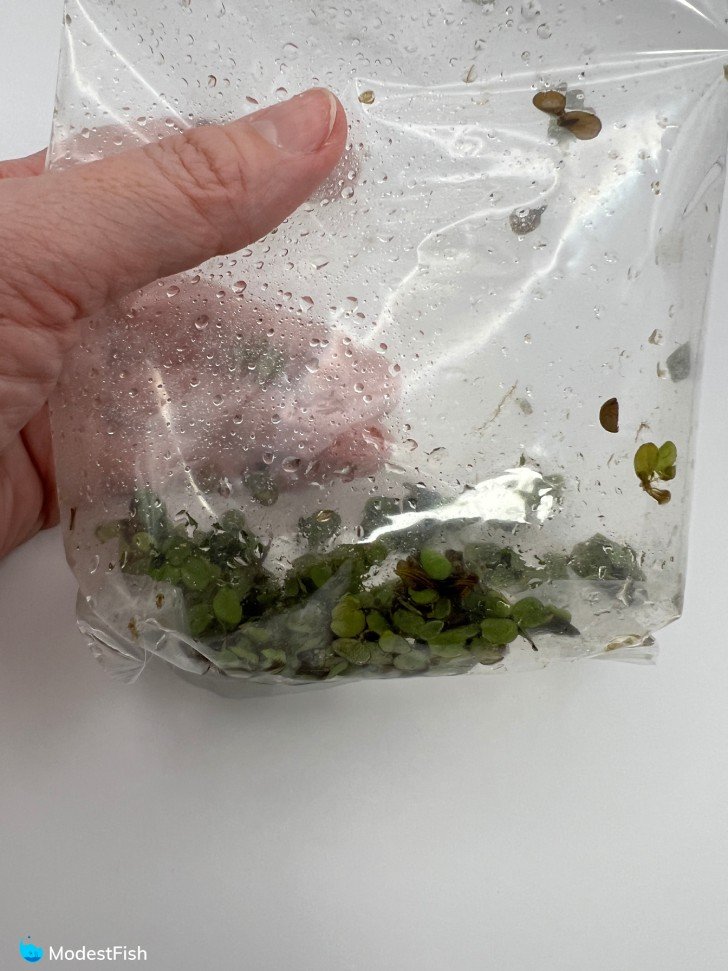
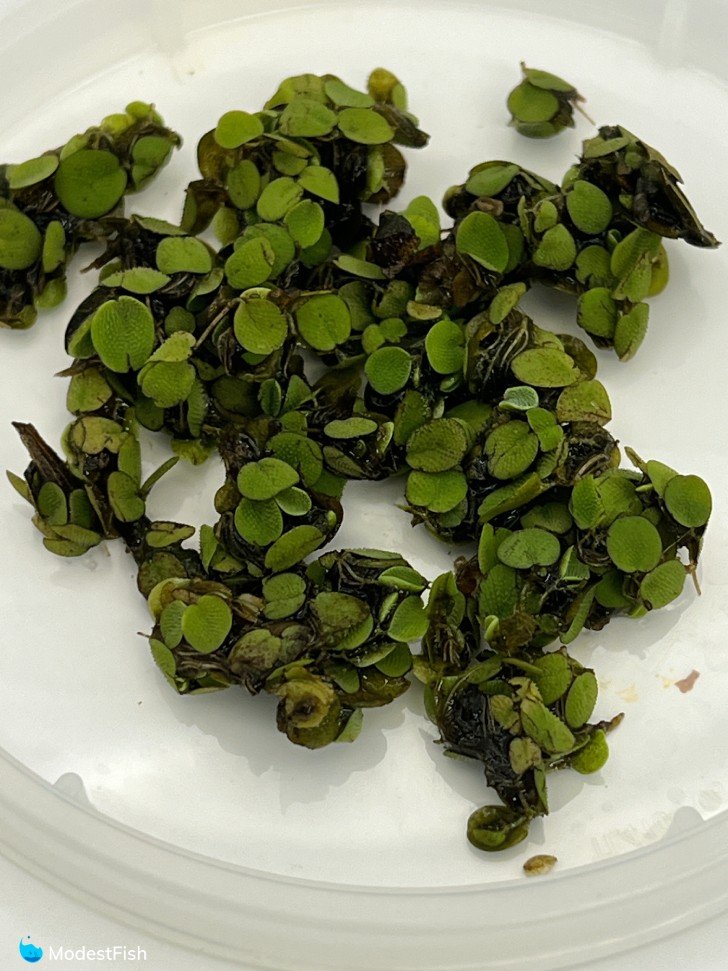
Frogbit has smooth, fleshy leaves that remind me of a succulent. At their largest, the leaves can be the size of a US quarter.
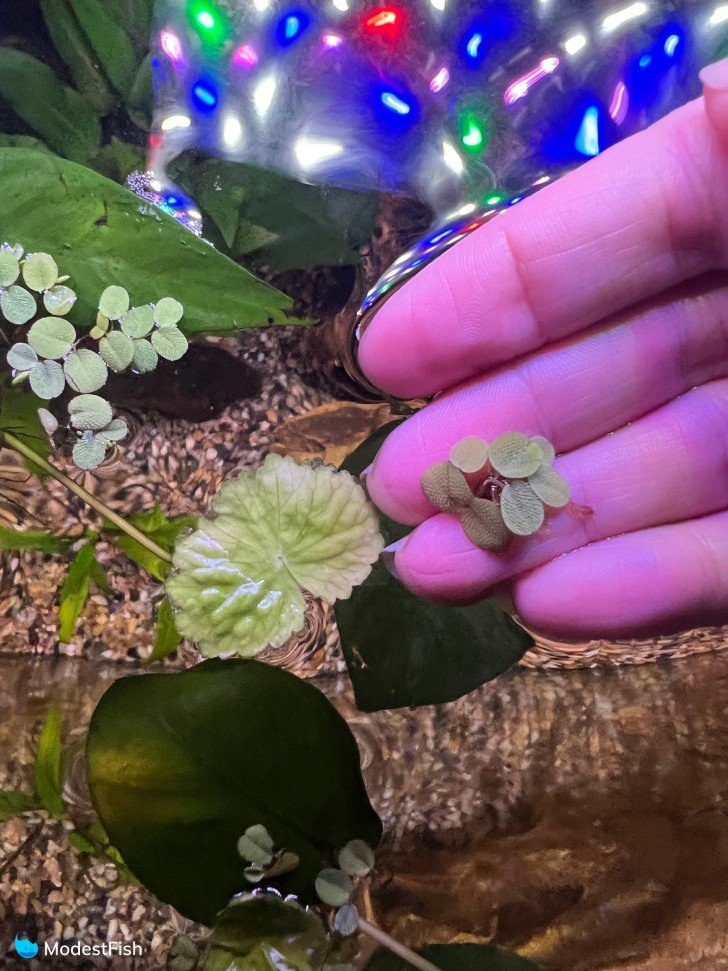
By contrast, water spangle leaves are about the size of my pinky nail and are covered with “hairs” that help to repel water. These hairs make the plant resemble a cat’s raspy tongue.
As similar as water spangles are to frogbit, I was surprised to find out that the spangles are actually a type or fern. I thought that was kinda cool.
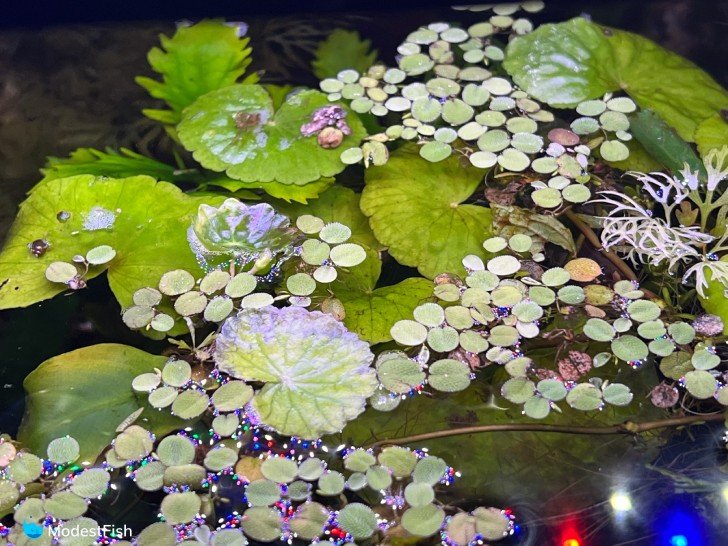
I’ve found that water spangles grow very quickly. Just like frogbit, I’ve noticed that this species needs still water to thrive. Strong flow will put too much wear and tear on the delicate leaves. And, if water sits on top of the leaves for a prolonged period of time, it will cause the plant to rot.
Also, I’d say that it needs at least medium light to thrive.
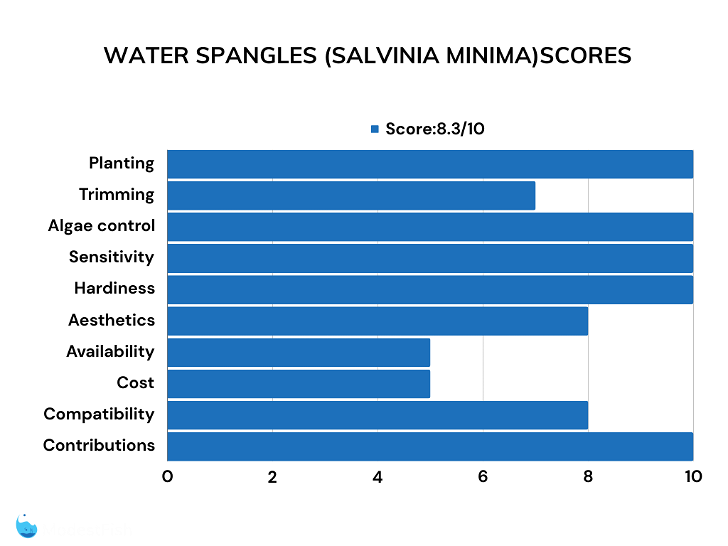
Pros:
- Interesting and unique texture
- Grows quickly
Cons:
- Needs very still water to grow
- Requires at least medium lighting
Verdict – this nifty little plant is similar to frogbit, but much smaller. Its leaves are textured like a cat’s tongue.
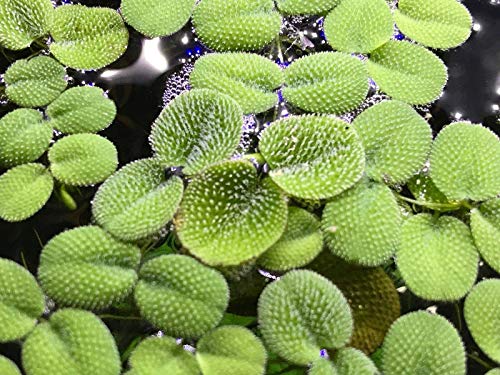
Last update on 2024-04-26 / Commissions Earned / Images from Amazon Product Advertising API
5. Anacharis (Elodea sp.)

- Temperature: 60°-82°F (16°-28°C)
- pH: 6.0-8.0
- Lighting: Low
- Origin: North America
- Placement: floating (can also plant)
- Care: Easy
Anacharis is one of the fastest growing plants I’ve ever kept. Only the unstoppable force known as duckweed is faster.
Growing it as a floating plant eliminates the biggest problem I normally have with anacharis: having to trim and replant it repeatedly. If I grow this plant rooted in the substrate, I have to pull up the plants, chop off the tops and then replant them.
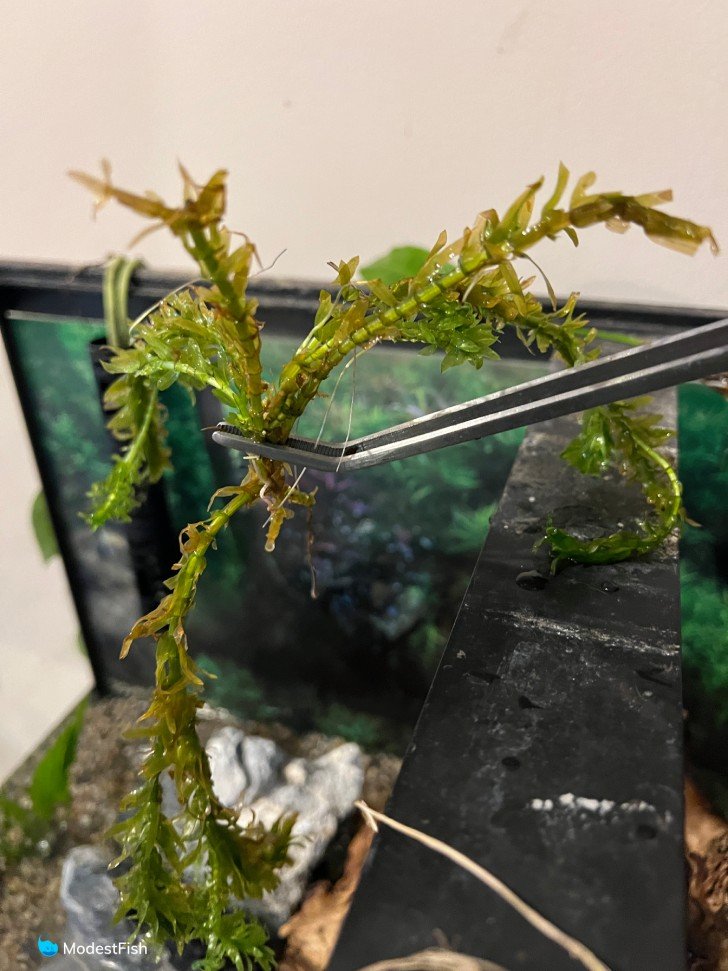
If I just let it float, I can easily cut off any raggedy parts of the plants and dispose of them. Then I just throw the good parts back into the tank and let them grow. It’s so easy.
But, I do have to admit that this isn’t a great looking floating plant, at least in my opinion. Anacharis will grow long ropes that tangle and twist around each other.
However, I will say that shrimp love anacharis. I’ve seen my cherry shrimp crawl all over it to feed on algae that grows on its surface.
And I have definitely noticed that it eats up a lot of nitrate.
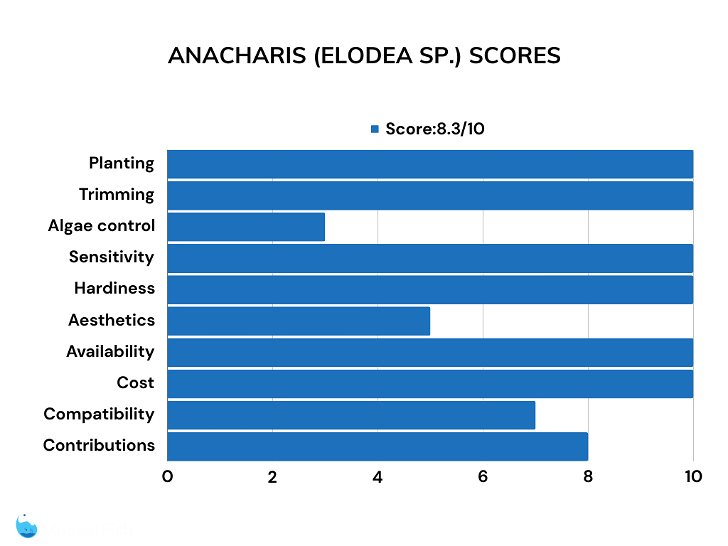
Pros:
- Fast growing
- Eats up nitrate from the water
- Easy to trim
- Great for ornamental shrimp
Cons:
- Not the most attractive floating plant
Verdict – this isn’t the most attractive floating plant, but it’s very simple to maintain and shrimp love it.
Last update on 2024-04-26 / Commissions Earned / Images from Amazon Product Advertising API
6. Brazilian Pennywort (Hydrocotyle leucocephala)
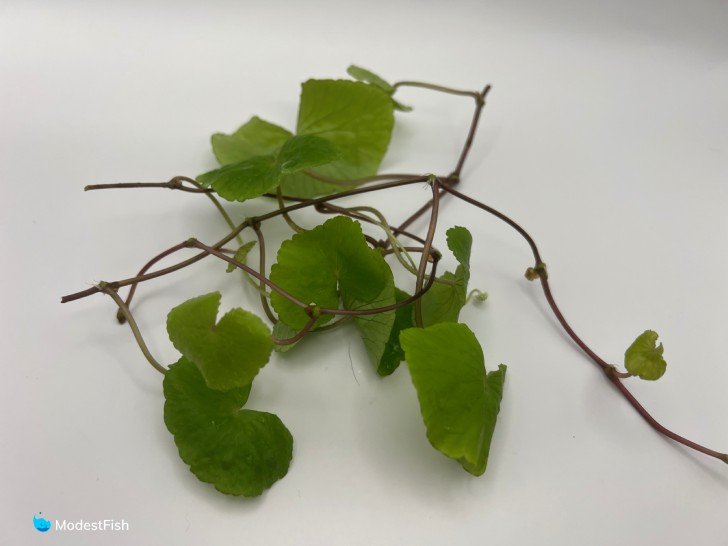
- Temperature: 68° – 82° F (20° – 28° C)
- pH: 6.5 – 8.0
- Lighting: Medium
- Origin: South America, Mexico, and Argentina.
- Placement: Floating
- Care: Easy
I love this plant. I’ve kept it in several tanks off and on over the years. It’s really easy to take care of, so it’s great for beginners.
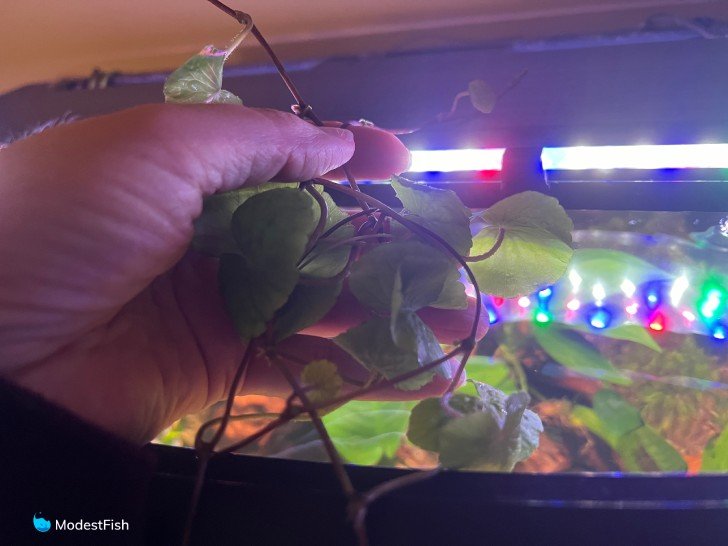
Brazilian pennywort is made up of a long, skinny vine-like stem. Every few inches, a smaller stem with a leaf branches off. A cluster of roots sprouts from the same nodes that the leaves emerge from. The leaves float at the water’s surface and the roots trail down into the water.
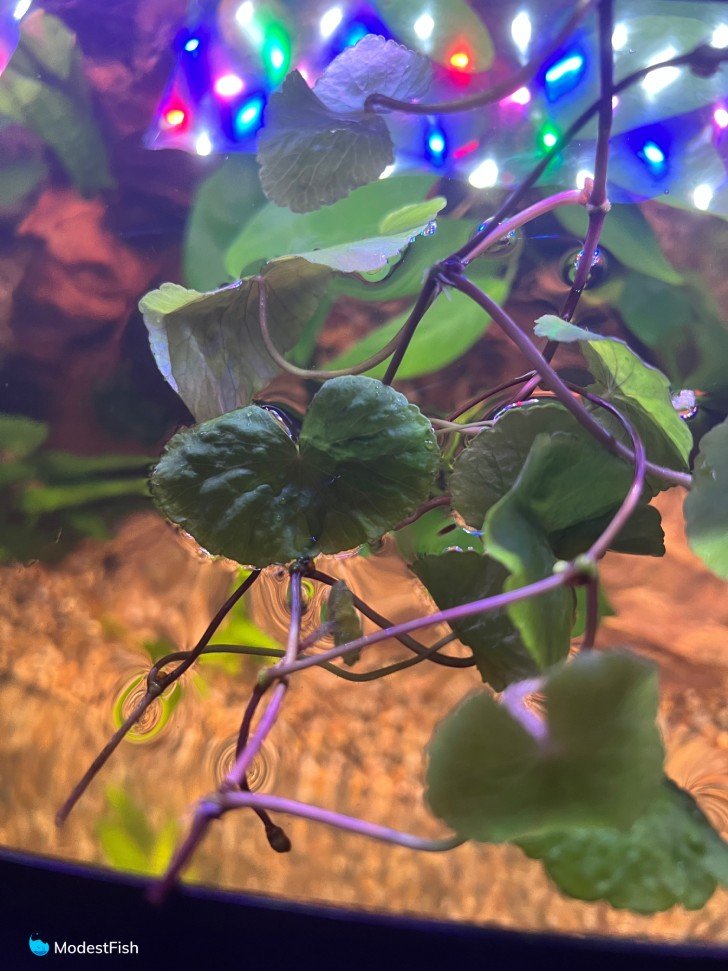
The leaves are really pretty: bright green, ruffled edges that look a bit like tiny lily pads floating along in a line.
Unlike some other floating plants, I’ve found that this species can tolerate fairly high water flow. It just needs to be anchored to something and the long stems can be allowed to trail off into the current.
I’ve used a variety of things to anchor brazilian pennywort growing in my tanks:
- Feeding rings
- Veggie clips
- Filter pipes
I’ve always found this plant to be very hardy. It grows like mad part of the year, but then seemingly goes dormant for a few months.
So, if you heavily trim your pennywort, and it seems to not grow back, have no fear. Just give it some time, and it will start to grow like crazy again.
I’ve always noticed that this plant has a positive impact on water parameters, most of the time. It has less of an impact when it goes into a more dormant period and stops growing for a while.
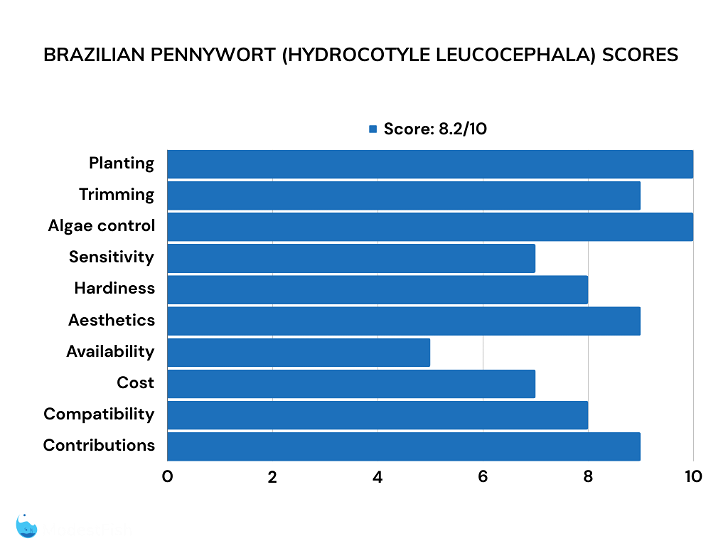
Pros:
- Beautiful leaves
- Eats up nitrate
- Can handle much more water flow than other floating plants
Cons:
- Goes dormant for a few months each year
Verdict – easy and beautiful floating plant that looks like a cross between ivy and lily pads.
Last update on 2024-04-26 / Commissions Earned / Images from Amazon Product Advertising API
7. Duckweed (Lemina minor)
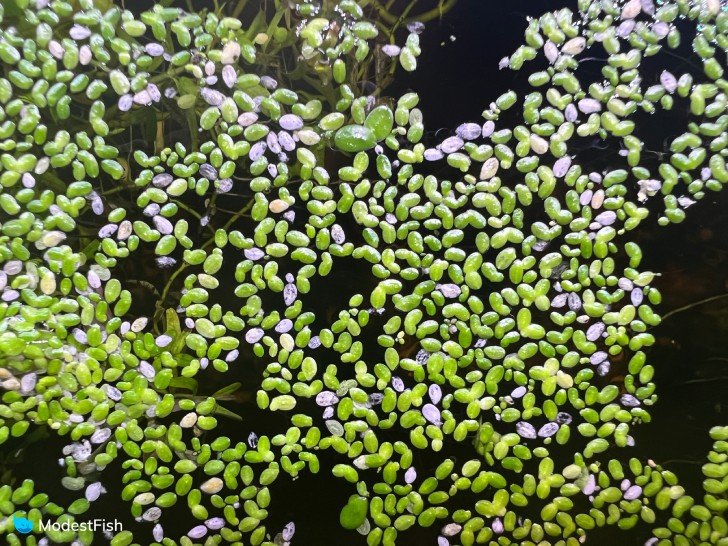
- Temperature: 60° – 90° F (15° – 32° C)
- pH: 6.5 – 8.0
- Lighting: high
- Origin: North America, Southeast Asia, Europe
- Placement: Floating
- Care: Easy
I both love and hate duckweed. It grows as tiny clusters of two or three leaves that float on top of the water’s surface, with a small cluster of roots that trail down into the water.
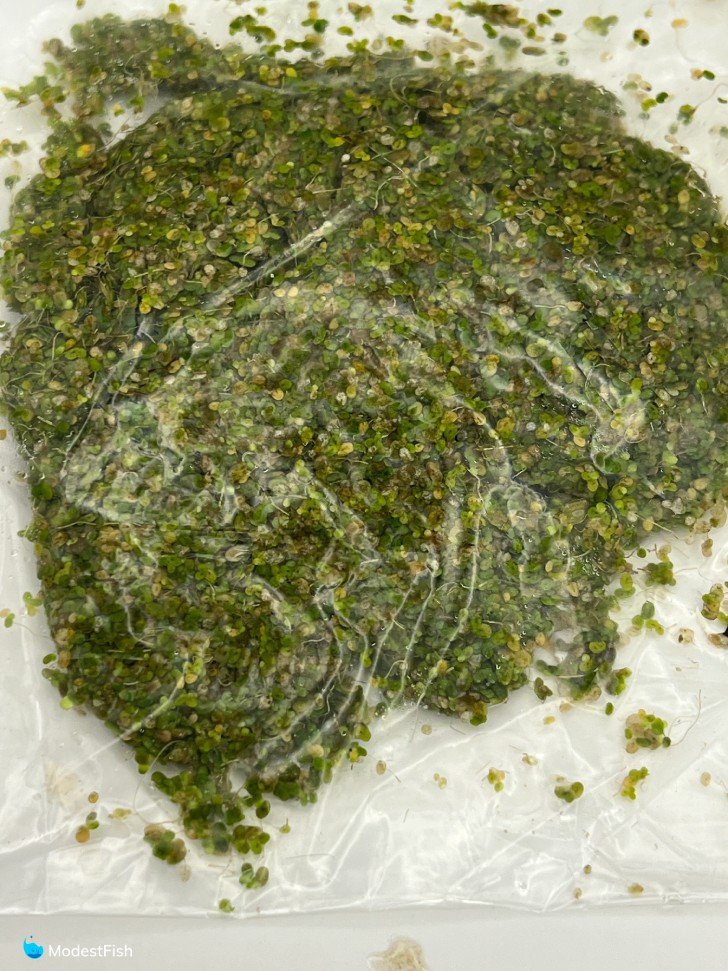
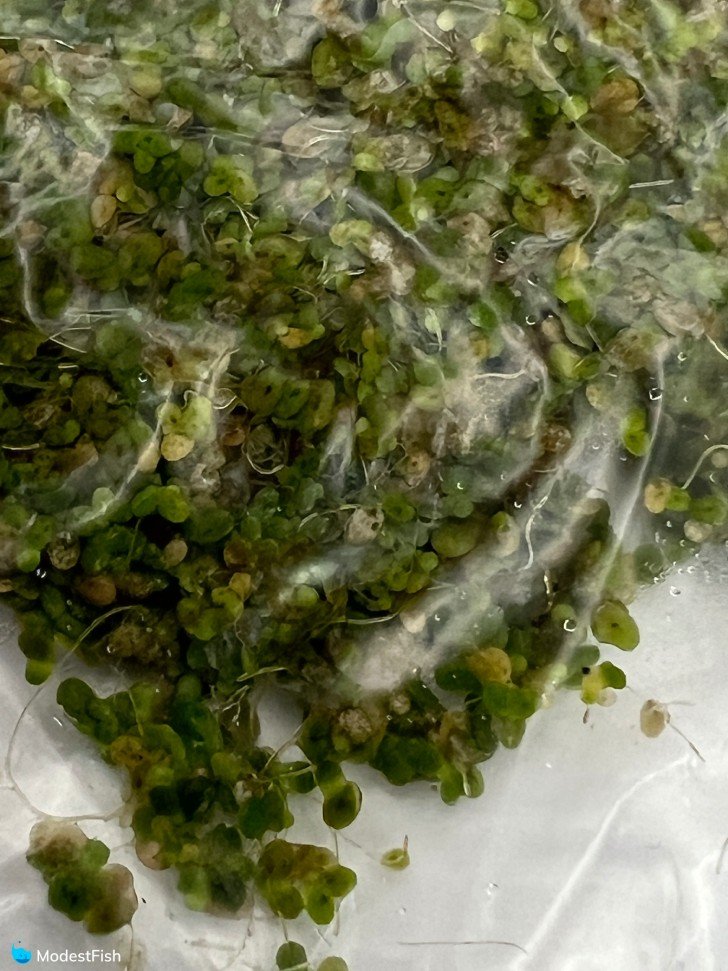
If you’re looking for an easy floating plant that will eat up excess nutrients, duckweed is the way to go.
It grows slowly under low light, and under medium or high light, it is a force of nature like nothing you have ever seen before. It can double its mass every 16-24 hours, given the right conditions.
This exponential growth is pretty amazing and it eats up lots of nitrate from the water.
I’ve had heavily stocked tanks that had zero nitrates in the water because a layer of duckweed sucked it all up.
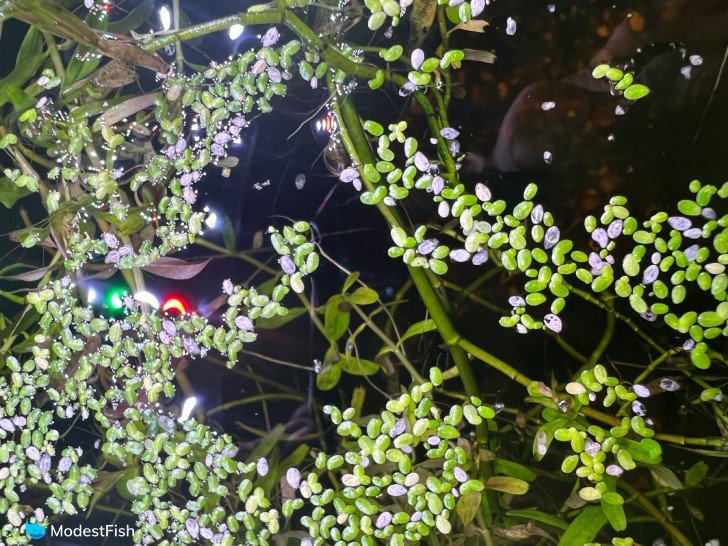
But, there are some downsides to duckweed, in my opinion. All that growth means you will frequently need to scoop out excess growth. Duckweed is kind of like Tribbles, if you turn your back on it, you can quickly find yourself overrun.
It can even grow thick enough in a tank to choke out light and block gas exchange at the surface.
I do have to say though, the discarded duckweed makes great compost. Or it can even be used to feed certain types of fish, especially Goldfish and herbivorous cichlids.
A downside to duckweed is that it is pretty messy. Any time that you need to reach into the tank, your hands, tools and nets will get coated in all the little leaves. It rinses right off, but it’s a bit of pain sometimes.
This species needs still water; it cannot handle surface agitation or strong current in the tank.
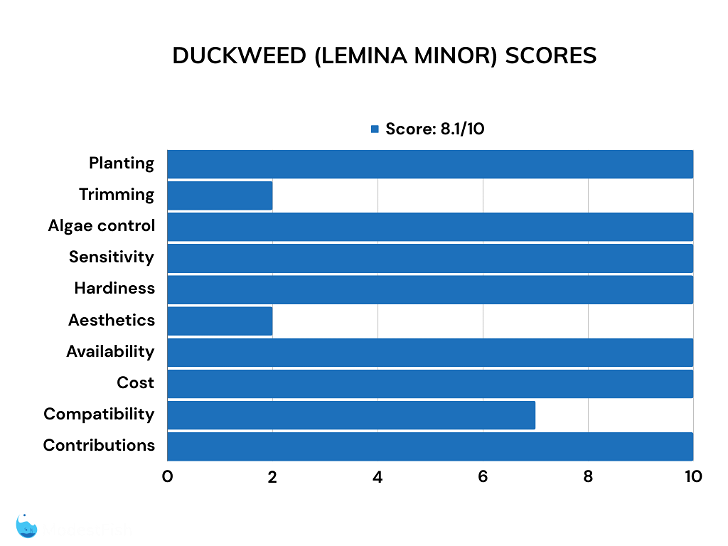
Pros:
- Grows quickly
- Eats up lots of nitrate
- Can be used to feed certain types of fish
Cons:
- Requires frequent removal
- Can choke out light to plants below
Verdict – Hands down, it removes nitrate from the water column the best. But, it can easily become an overgrown mess.
Last update on 2024-04-26 / Commissions Earned / Images from Amazon Product Advertising API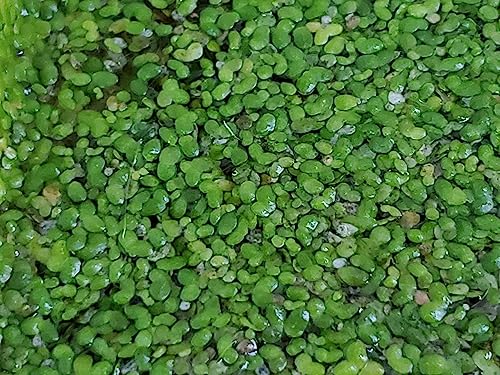
8. Guppy Grass (Najas guadalupensis)
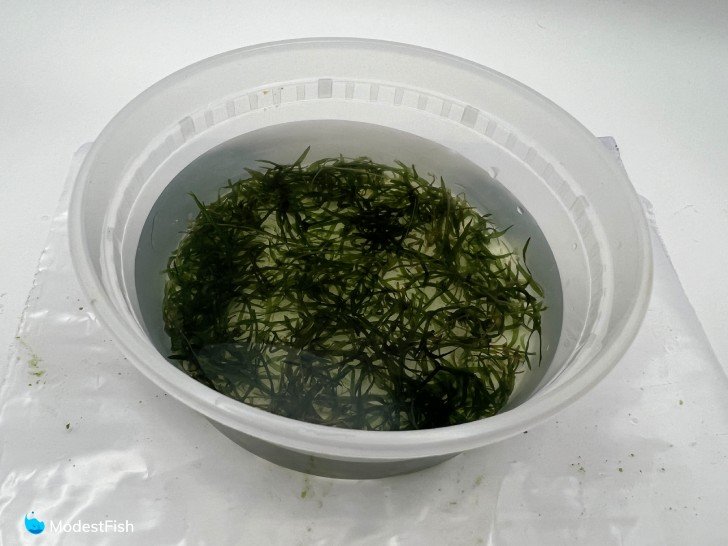
- Temperature: 68° – 82° F (20° – 28° C)
- pH: 6.5 – 8.0
- Lighting: Medium-high
- Origin: North and Central America
- Placement: Floating
- Care: Easy
Guppy grass is kinda insane! I’ve found this to be a super hardy plant that could practically grow in a toilet.
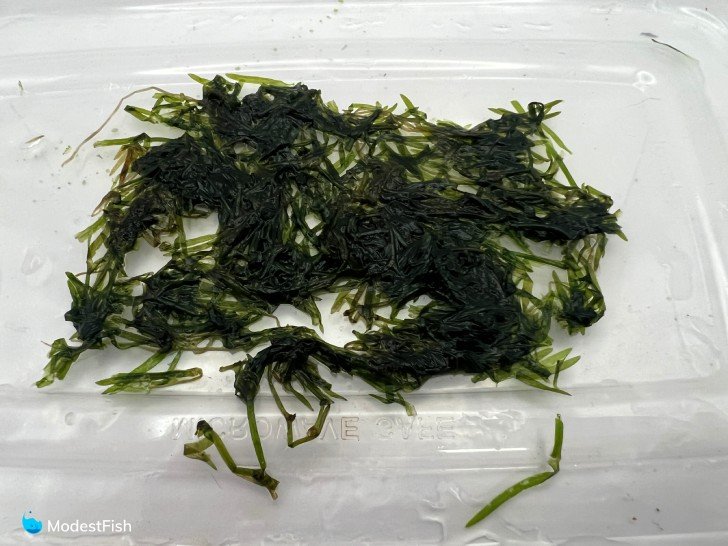
It forms a tangle of grass like stems that make the perfect home for fry and shrimplets. Not only does the grass give them a place to hide from adult fish, the infusoria that will colonize this plant is a great food source for them.
This stuff grows and grows, and because of this it eats up a lot of nitrate out of the water.
Be forewarned, you can leave guppy grass to just float in the tank, and it will grow just fine, but the bottom of the plant will often shoot roots down into the substrate.
Also, I’ve found that this plant grows so quickly that you will need to trim it frequently. You can hack this plant back by 90% and it will just bounce right back in no time.
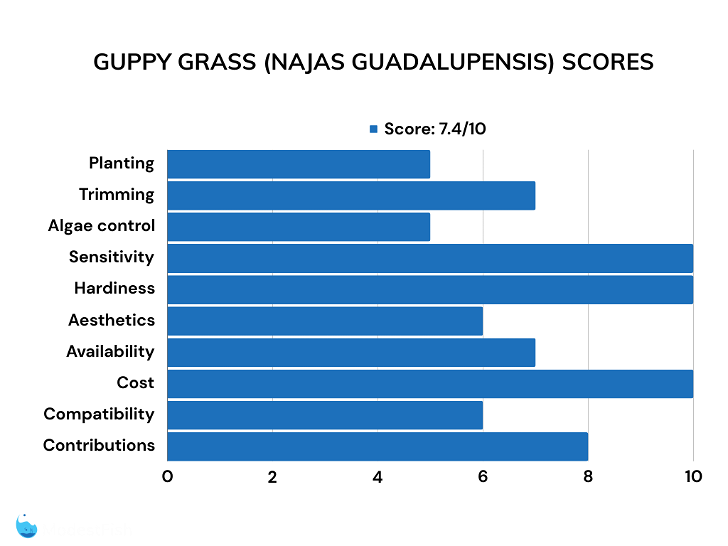
Pros:
- Great for shrimp and fry
- Removes lots of nitrate
Cons:
- Needs frequent trimming
- Looks messy and tangled
Verdict – my number one choice is you want to provide hiding places for shrimp and fry.
Last update on 2024-04-26 / Commissions Earned / Images from Amazon Product Advertising API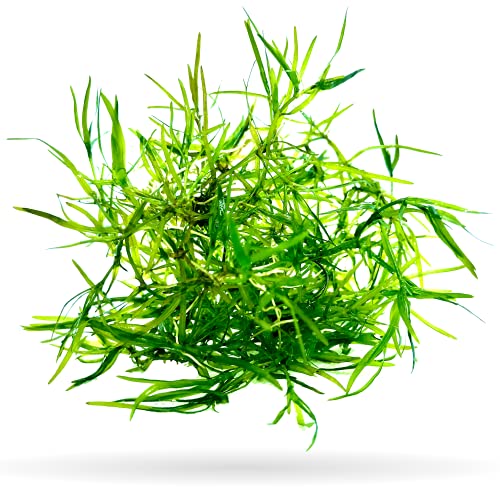
9. Hornwort (Ceratophyllum demersum)

- Temperature: 68° – 82° F (20° – 28° C)
- pH: 6.5 – 8.0
- Lighting: Medium-high
- Origin: North America and Eurasia
- Placement: Floating (can be planted)
- Care: Easy
Hornwort (aka coon tail) is a fast growing floating plant that is shaped like a bushy fox or racoon tail.
I have always noticed that it does a great job at eating up nitrates in the water column. It grows fairly quickly and will stretch itself over the entire surface of the aquarium if allowed.
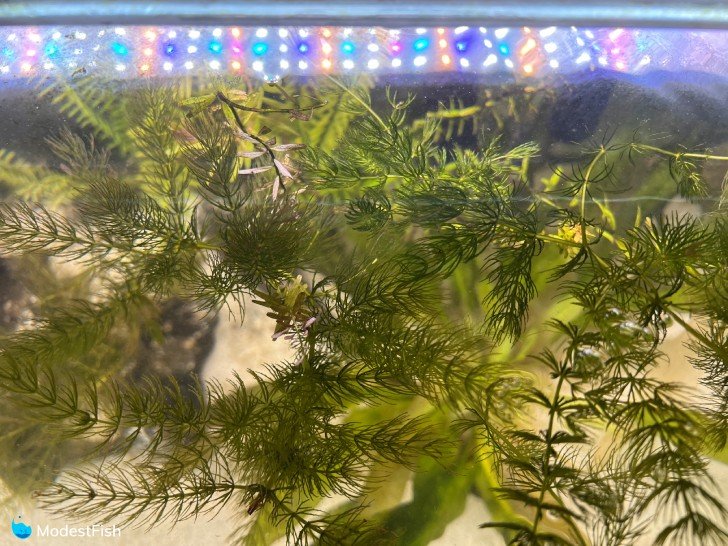
It has thin, needle-like leaves that emerge from long, thin stems. It provides excellent cover for shrimp and fry. In my experience, it’s a great thing to float in a livebearer tank because it is such a great hiding place for baby fish.
However, this plant can be VERY sensitive while you are trying to get it established. It will often drop all of its leaves and melt back extensively when first introduced to a tank, creating a big mess.
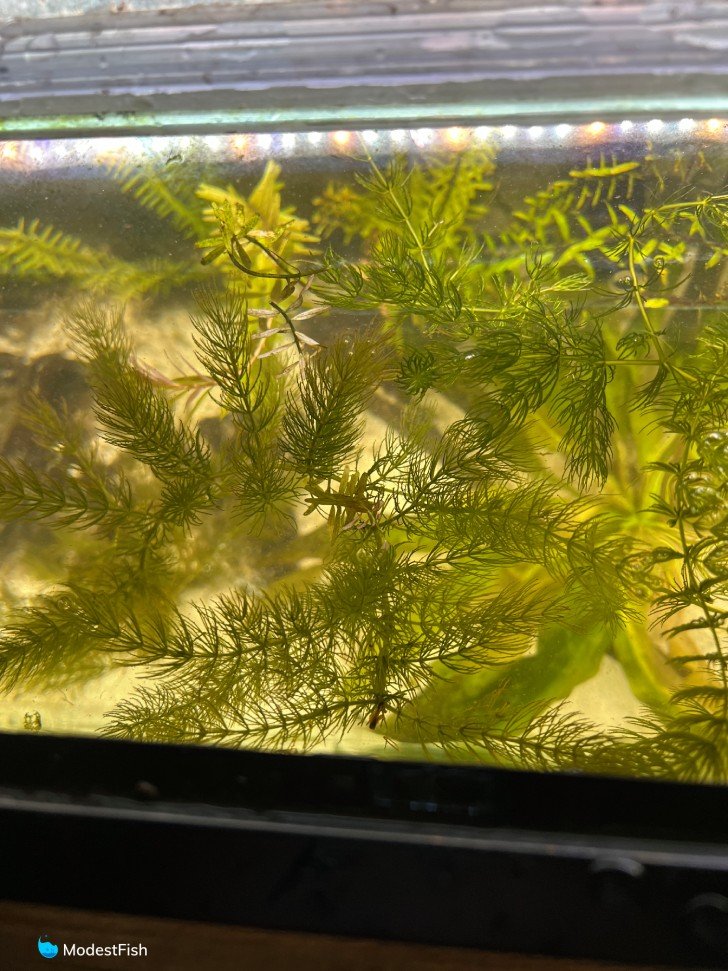
This can be a major pain in the butt because the needles are tough and hard to clean up.
I’ve always seen the hornwort eventually bounce back and start putting out new growth, but it can be very frustrating to have to clean up a big mess.

Pros:
- Grows quickly
- Great cover for shrimp and fry
- Eats up lots of nitrate
Cons:
- Can be sensitive and temperamental while getting established
- Plant may drop its leaves and cause a big mess
Verdict – this is a large floating plant that eats up lots of nitrate, but can be sensitive and difficult to get established, at first.
Last update on 2024-04-26 / Commissions Earned / Images from Amazon Product Advertising API
Conclusions
Floating plants help provide shade for other plants, eat nutrients from the water, give cover and food to tiny inhabitants and add another dimension of interest to your aquarium.
I utilize floating plants in a variety of my tanks and I really enjoy them.
I like that they make the top view of the tank more interesting. And I’ve found that they make shy fish feel more secure at the water’s surface.
Algae control is noticeably easier in tanks with a lot of floating plants and the water parameters are also usually better as well.
Not all species are created equal and there can be a big difference in the amount of growth and maintenance you can expect from each one.
If I had to pick a favorite, it would be Brazilian pennywort, it’s just a personal favorite. I just love the leaf shape.
I hope you find this article helpful.
I wish you and your fish the very best!

Very helpful and fun